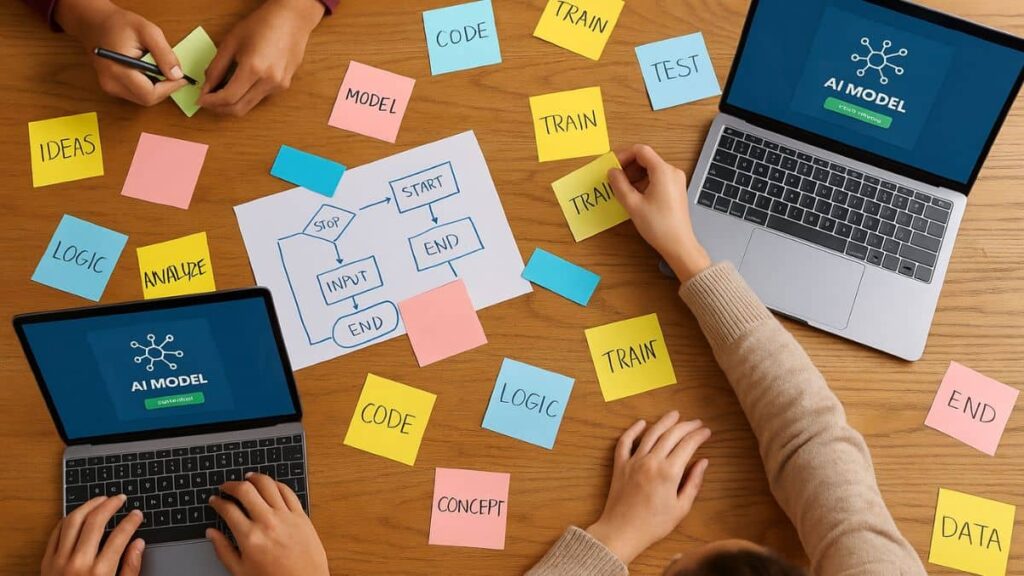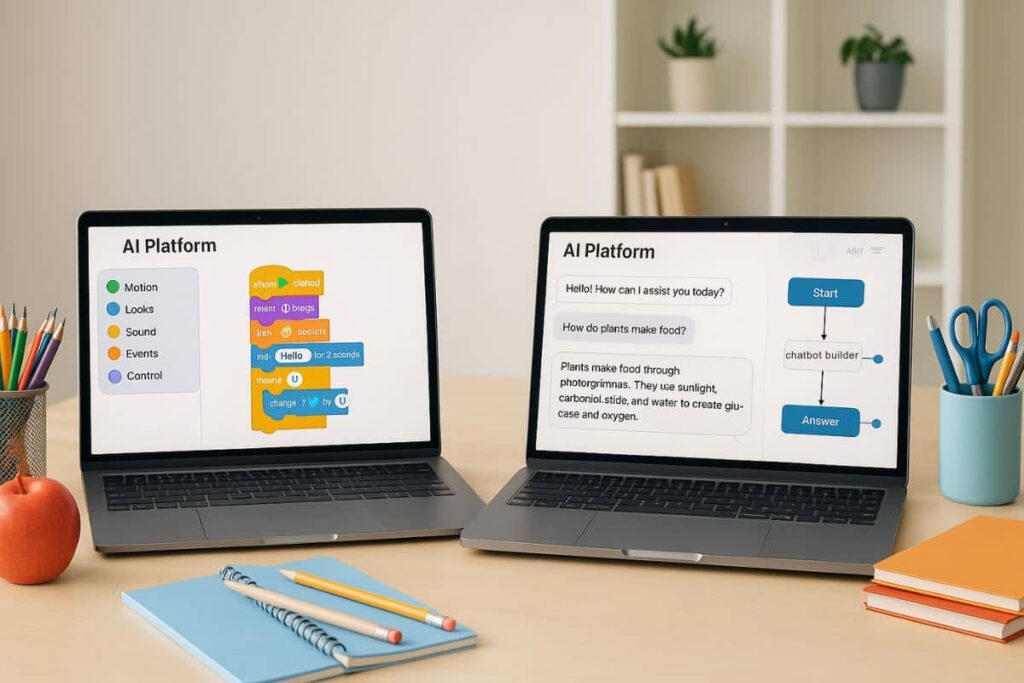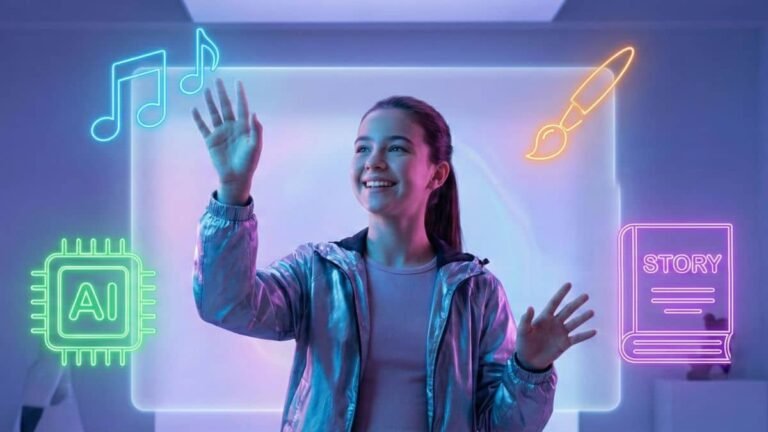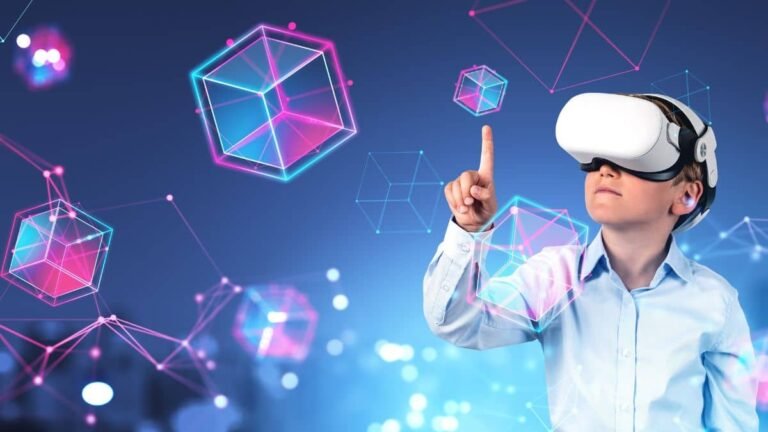Address
251 Little Falls Drive, Wilmington, DE 19808, United States

What if learning artificial intelligence became as essential as reading and writing? As AI shapes nearly every part of our lives, kids learning AI is no longer a futuristic idea, it’s a modern necessity. In this article, we explore why AI is becoming the new literacy for young minds and what experts believe about starting early. Ready to see why this shift matters?
Table of Contents
What does “AI literacy” actually mean for kids?
AI literacy isn’t about turning kids into data scientists overnight. At its core, it means helping children understand what artificial intelligence is, how it works, and how it affects their daily lives. Just like reading, writing, and math, learning AI is becoming a foundational skill for navigating the modern world.
From voice assistants like Alexa to personalized recommendations on YouTube, kids are already interacting with AI, even if they don’t realize it. Teaching them the basics gives them power: the ability to ask questions, understand systems, and become creators instead of passive users.
The growing role of AI in everyday life
Whether it’s organizing traffic, diagnosing diseases, or filtering spam emails, AI is everywhere. It’s not just in the tech world anymore: it’s in art, music, education, and even toys. For kids growing up today, understanding AI is like learning to read was for generations past. It opens doors.
Imagine your child designing a game that learns how to improve itself as they play. Or using a chatbot to practice a new language. These aren’t far-off dreams, they’re real possibilities happening in homes and schools worldwide.

Why early exposure to AI matters
The brain’s sweet spot: Ages 7–14
Childhood is a prime time for learning complex ideas in simple ways. Kids’ brains are wired for pattern recognition and curiosity, two traits essential to understanding AI. Introducing the basics of machine learning or algorithms when kids are naturally inquisitive helps solidify lasting knowledge.
Building cognitive and creative skills
AI literacy isn’t just technical; it’s deeply creative. Kids learn how to problem-solve, experiment, and think critically. They begin to understand how technology can be used ethically and responsibly. This kind of exposure nurtures a flexible mindset, one that thrives in our fast-changing world.
Debunking the myths around kids and AI
“AI is too complicated” — Not anymore
Sure, some AI concepts are complex, but they don’t have to be taught that way. With kid-friendly platforms like AI learning tools designed for kids, concepts like pattern recognition or logic trees become fun and accessible. Think drag-and-drop coding, storytelling games, and hands-on experiments.
“Kids should learn later” — Here’s why not
Waiting until high school to introduce AI is like waiting to teach reading until age 15. The earlier kids understand the tech shaping their world, the more confident and empowered they become. Plus, early exposure reduces fear and encourages healthy curiosity.
Real-world examples of kids learning AI today
Classrooms, apps, and at-home projects
Across the globe, schools are integrating AI concepts into STEM programs. Apps like Cognimates and Scratch with AI extensions allow kids to train simple models or create interactive projects. Families at home are exploring AI through smart kits and digital assistants, turning dinner tables into innovation hubs.
Countries leading the movement
Estonia, China, and the U.S. are among the leaders in AI education for young minds. Estonia recently launched a national curriculum to teach AI from primary school onward. Articles like this one on how educators can prepare students to stay ahead of AI highlight how global education systems are adapting to an AI-powered world.

How parents and educators can support AI learning
Simple tools and resources to get started
You don’t need to be a tech expert to help kids begin their AI journey. Many beginner-friendly resources are designed specifically for young learners. Articles like this beginner’s guide to computer coding for kids or platforms as Google’s Teachable Machine provide interactive experiences that explain foundational tech concepts in simple, visual ways, including how AI fits into the bigger picture of programming. For example, you can find kid-friendly AI education content on YouTube that introduces key concepts through engaging, visual formats ideal for beginners.
Schools can also integrate basic AI lessons into subjects like math and science. Even storybooks and cartoons now introduce AI themes to spark interest and simplify complex ideas. These tools build foundational understanding in a way that feels playful not intimidating.
Encouraging curiosity without pressure
The key is to nurture curiosity. Kids learn best when they’re exploring topics they find interesting. Encourage questions like “How does YouTube know what I want to watch?” or “Can a robot think like a human?” These everyday questions are perfect entry points into conversations about AI.
Make space for experimentation: let them tinker, fail, try again, and build. That process is at the heart of both creativity and innovation.
How kids learning AI can encourage collaboration and empathy
One of the lesser-known benefits of teaching kids about AI is how it promotes collaboration and emotional intelligence, both of which also support better student writing. Many AI projects in schools are designed as team activities, whether it’s building a chatbot, training a model, or analyzing data patterns. Kids must brainstorm, assign roles, and solve problems together, which builds trust and teamwork.
But it goes deeper than group work. When kids design AI systems, they’re asked to think about fairness, bias, and the social impact of technology. Who gets to decide what’s “fair”? What happens if an AI misjudges someone? These questions don’t just sharpen critical thinking, they nurture empathy. Children begin to understand how real-world tech can influence people’s lives, for better or worse.
Through AI education, kids aren’t just learning to code, they’re learning to care. And that’s a lesson every future innovator needs.
The future benefits of AI literacy
Career paths and competitiveness
In the future, most careers will either involve AI or be influenced by it. From healthcare to marketing to engineering, AI is revolutionizing industries. Kids learning AI early gain a competitive edge, not just in tech careers, but in any field that values analytical and adaptive thinking.
They won’t just use AI, they’ll understand how it works, what its limitations are, and how to shape it ethically.
Ethical thinking and responsible tech use
AI isn’t just about machines, it’s also about humans. Teaching kids to think critically about fairness, bias, privacy, and transparency helps create a generation that uses technology responsibly. They’ll learn to ask: “Who designed this algorithm?” and “Is this decision fair for everyone?”
“The earlier kids understand AI, the more prepared they are to lead ethically in a tech-driven world.”
With tools like AI learning for kids programs, we’re already planting the seeds of thoughtful, innovative future leaders.
From cognitive development to ethical thinking, kids learning AI opens doors that go far beyond technology. Early exposure fosters curiosity, collaboration, and a deep sense of responsibility in tomorrow’s innovators. Whether you’re a parent, teacher, or curious reader, now is the time to explore the world of AI education for kids and help shape a smarter, more empathetic future.










